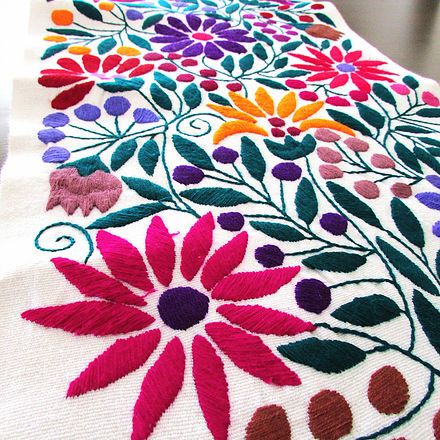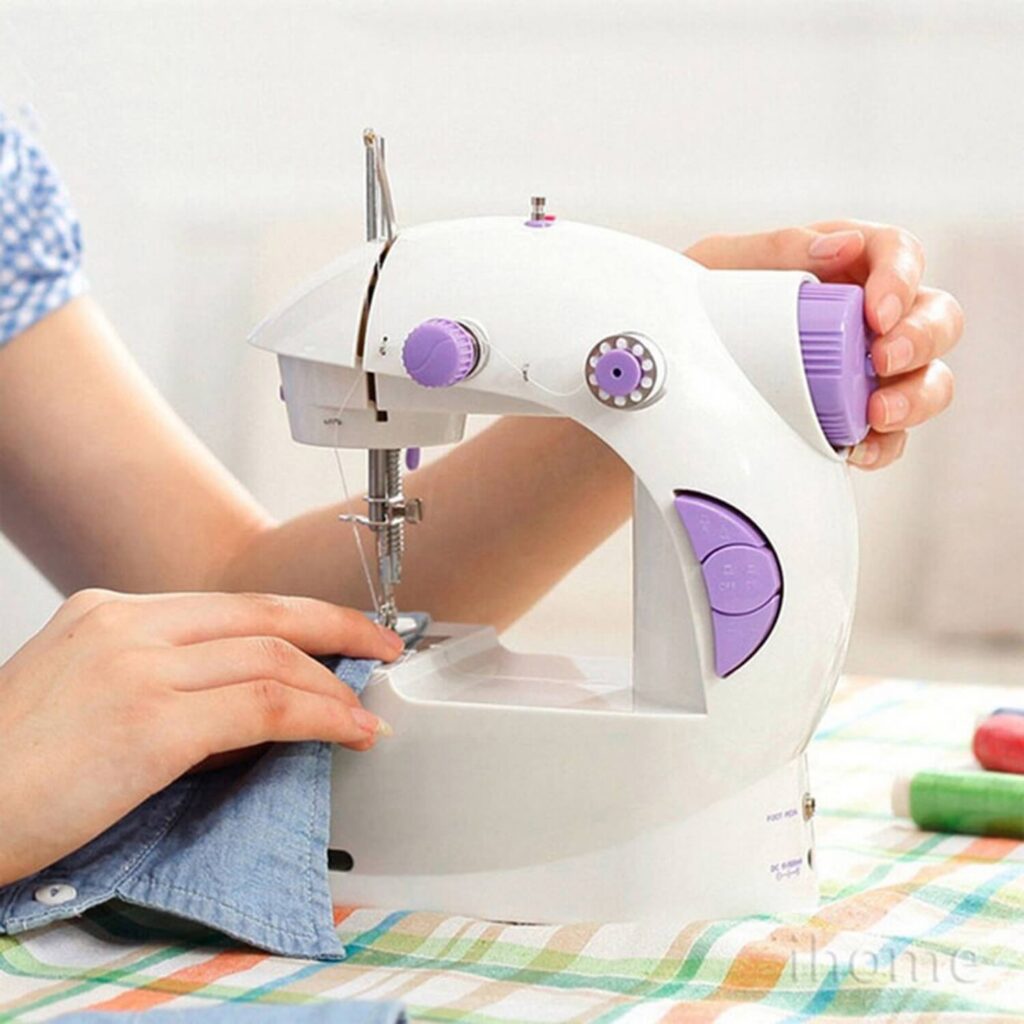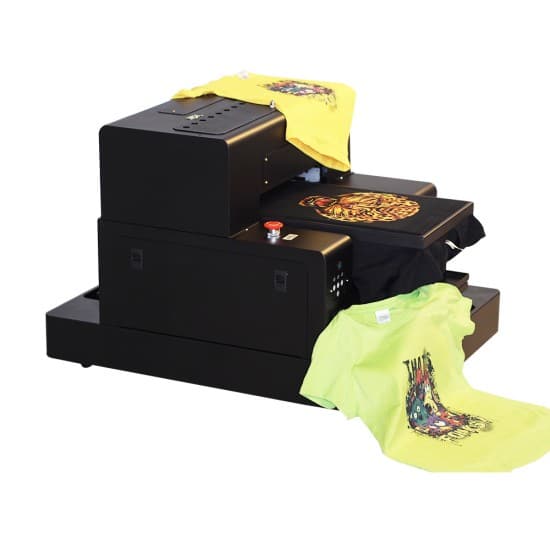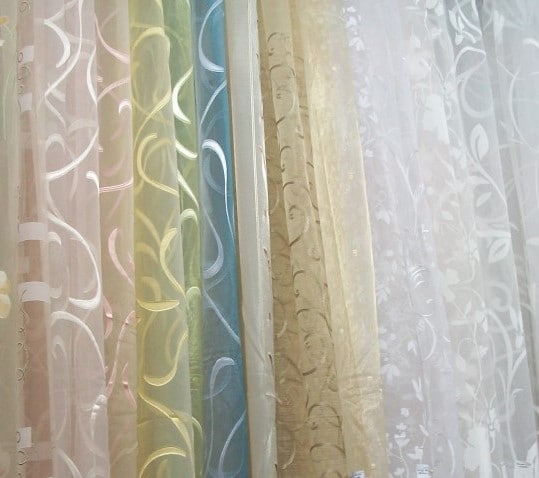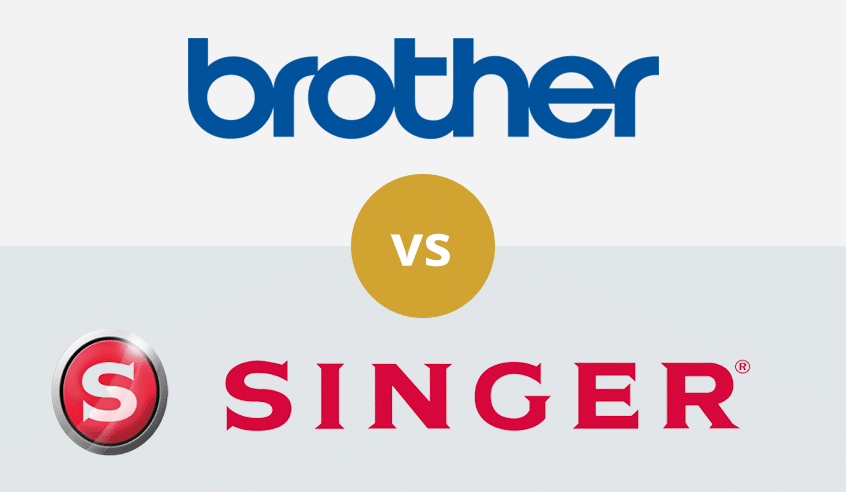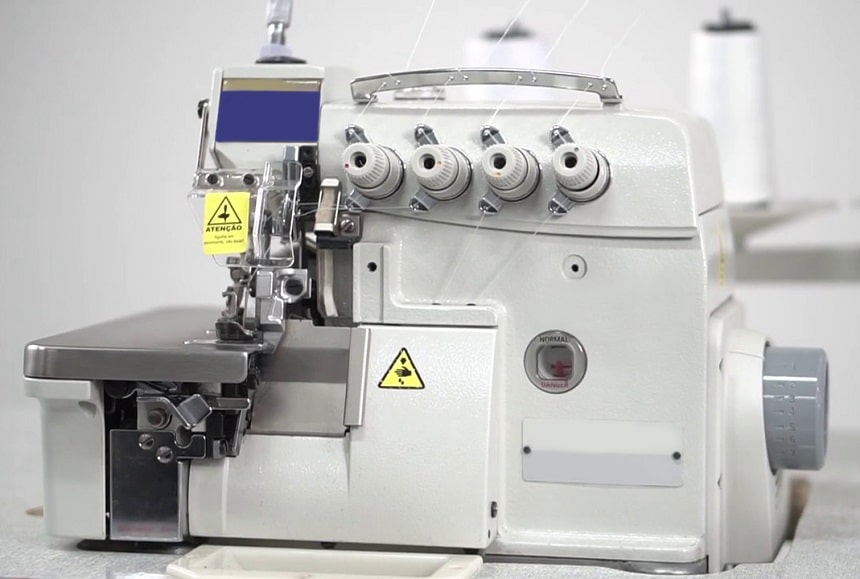

Are you an avid sewer or just starting on your sewing journey? Either way it’s important to familiarize yourself with the different sewing machines available on the market and what they’re used for. Everyone has heard of a sewing machine but have you ever heard of a Coverstitch or Serger machine?
In this article, we will take an in-depth look at each of these machines and how they function. We will also discuss the differences in a Coverstitch vs Serger comparison so you can see which machine is right for you.
Both offer a range of different sewing features that will enhance your sewing experience and allow your creativity to flourish. These are specialty machines that won’t take the place of your regular sewing machine.
A popular name which you may have heard before is the overlocker. This is another name for the Sergers machine. Its function is to create a professional finish for your sewing project. Used to finish hems, sleeves, and seams, it works best on knitted fabric and allows you to tailor items to perfection.
This little machine packs a powerful punch and can run at speeds of up to 1,700 stitches per minute. It’s able to hold up to eight spools of thread simultaneously and features two sharp needles.
The needle enters the piece of material and forms a loop with the thread at the back of the needle. As you sew the needle is pushed deeper into the fabric and the loop moves from left to right. The tip of the first loop then goes behind the needle and then back up through the second loop.
As you continue to sew the lower loop moves to the left and the upper loop holds the thread neatly in place. This pattern of sewing is known as overlocking Trusted Source Overlock - Wikipedia An overlock is a kind of stitch that sews over the edge of one or two pieces of cloth for edging, hemming, or seaming. Usually an overlock sewing machine will cut the edges of the cloth as they are fed through (such machines being called sergers in North America), though some are made without cutters. en.wikipedia.org .
Its main job is to clean up seams and make them look tidier. The Serger will trim extra fabric left for seal allowance, then cover it neatly by sealing the edge of the fabric.
The Serger machine can perform four basic stitches:
The overlock stitch: This stitch closes the seam and locks in the edge of the material to give a professional finished look and stop the garment from unraveling
Cover stitch: This stitch is used to sew a hem and is found in most store purchased t-shirts
Flatlock stitch: Used to join separate pieces of fabric with a seam that can open and lies flat
Rolled hem: Used as a finishing touch to your material, it covers the hem with a small amount of thread at the edge
It can be quite tricky to thread a Serger machine and it might take a bit of practice before you master the art.
Similar to the Serger this machine is also primarily used to hem items. Not only does it cover and seal the raw edges of the material, but it also allows you to work with stretchy material while maintaining the fabric’s stretchability. This is perfect for children’s clothing and gym wear that requires the seam to stretch.
The main difference between the two machines is that the Coverstitch machine does not have a blade. It can’t cut the fabric and is used to provide decorative hems and chain stitching.
This makes it ideal to use on woven fabrics Trusted Source Picturing Homeric Weaving – The Center for Hellenic Studies …weaving will be understood as an interlacement of two sets of threads at more or less right angles to each other within a system that holds one set of those threads under tension. chs.harvard.edu as it holds the fabric in place to stop it from unraveling. The fabric won’t pull or pucker as you sew like it would on an average sewing machine.
The Coverstitch machine used a combination of one, two or three needles to weave together thread and form a hem. It creates a parallel row of stitches on the front of the material and a chain stitch on the reverse side of the fabric. The way the needles are placed allows you to create either a wide or narrow stitch.
To add pretty details and a decorative look, you can use three needles with different color threads.
Getting the hang of using this machine may take a couple of practice sessions. Practice on fabric off cuts until you can comfortably switch between the different stitches.
What is the difference between a Serger and a Coverstitch machine? Each machine has a specific function and if you’re making bulk clothing orders or starting a sewing business it’s best to invest in both of them. If you don’t have space or can’t afford both right now, then the one you decide to buy will depend on the type of sewing that you need to do and the fabric you’ll use.
Side-by-side it will be difficult to distinguish which is which as they look very similar. After closer inspection, you will notice that the Coverstitch machine does not contain a blade to cut the fabric.
Serger vs Coverstitch which is better? The Serger is used to trim the fabric while it creates the hem. It does two jobs at the same time which will save you a lot of sewing time. The Croverstitch machine can’t trim the fabric so it will need to be done at a later time. So, along with the features mentioned below, you need to consider your purpose for buying a machine.
The prices between the two machines vary depending on the model and features. If you’re looking for an entry-level Serger that has a built-in 22 stitch functions and snap on, interchangeable snap on feet that is able to finish edges and hems on a wide range of fabrics then take a look at the Brother R1034DX Serger. It offers excellent value for money.
Brother Coverstitch vs Serger, what’s the difference? The Brother Coverstitch machine features two needles and three threads as well as three overlocking settings, including settings for a narrow hem, ribbon lock stitches and a rolled hem. Its speed reaches up to 1300 stitches per minute.
The Coverstitch JUKI Imcs-1500 is a little more expensive but packed with features, such as a state-of-the-art pressure foot that allows for precise sewing and cutting in one smooth motion. It’s also self-threading which helps cut down on sewing time.
Thread type is essential with both these machines. A thinner, light thread is ideal or you can purchase special thread specifically designed for each machine. When it comes to handling fabric, the machines perform in basically the same way.
A Coverstitch is perfect for knit, stretchy and woven fabrics. It sews with multiple needles at the same time. This allows you to produce one to three stitched lines side-by-side, depending on the look you’re trying to achieve.
Another interesting feature of a Coverstitch machine is that it can be used to add attachments such as lace or an elastic band. It can also create beautiful flat seams in a multitude of colors as a decorative touch. A Coverstitch machine sews a chain-stitch that has the unique ability to stretch without tearing the fabric.
The Serger machine is used to stop the fabric from unraveling and knits the overlock stitch to keep the material together. It then trims off the unwanted fabric before sealing the edge of the material.
Serger machines use different threads made up of multiple strands of thin lightweight thread. It’s much thinner than the thread a regular sewing machine uses. The number of threads you can use varies from four to eight. Normal sewing machine needles can be used with no problem.
The newest Serger machines have a nifty self-threading feature. This is helpful for those that struggle to thread small needles and saves time when threading.
You can use normal sewing machine needles, ballpoint needles, stretch needles, sharps needles and quilting needles with a Coverstitch machine. Most Coverstitch machines use three threads that are thinner than average sewing machine threads.
The Serger machine allows you to sew at a much faster pace than a Coverstitch machine and allows you to trim the fabric as you sew. If you use a Coverstitch machine you will need to go back and trim the unwanted fabric by hand, making the process take much longer.
A Coverstitch machine has a larger working area than the Serger machine. The working area of a Serger machine is located on the left-hand side and the needle plate is much smaller and narrower than on a Coverstitch machine.
The Serger machine can cut the material as you sew it, while the Coverstitch machine can’t since it doesn’t feature blades. Any cutting that needs to be done will need to be completed by hand.
Each machine has a specific function, so which machine is best for you? It will depend on the amount you’re willing to spend, how often you plan on sewing and if you prefer to cut by hand or let the machine trim the excess material for you.
If you sew for a living or need to complete multiple projects in a small amount of time then a Serger is a winning option. However, if you specialize in making children’s clothing, gym wear or knitwear then a Coverstich machine may be just what you’re looking for.
Coverstitch vs Serger which one comes out on top? Only you can decide.
